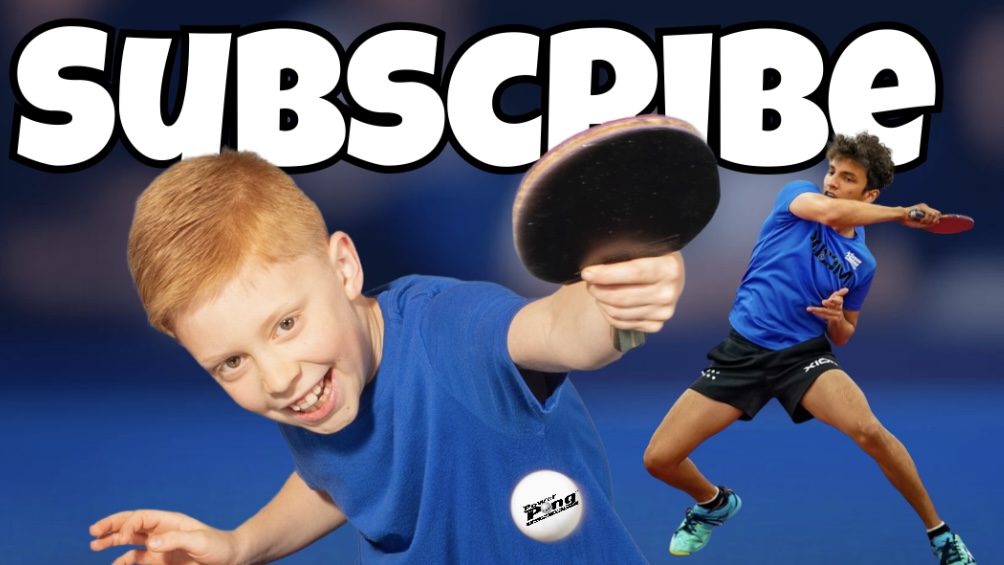To reach your highest potential, you and your coach must communicate on a detailed level realizing that communication is a two-way street. In this article, I’m going to outline the 5 levels of communication, then briefly discuss how you can reach your peak potential.
Level 1 – Hallway Talk
“Hey, what’s up man. How you doing?”
Level 1 is the shallowest form of conversation and it really not what a coach/player relationship should ever be, even from the first day. This is the level that you might have with a stranger or perhaps even your opponent.
Level 2 – Reporter Talk
“Hey student, you are playing at 9am on table 59 against Billy, he is a lefty with pips on the backhand but plays mainly looping and counterlooping with his forehand on most of the table.”
Level 2 is giving facts, and this is important for every coach/player relationship, that the coach be able to give facts about practice times, specific drills, tournament location, and opponents’ strengths and weaknesses. Level 2 is necessary, but the communication shouldn’t stop here.
Level 3 – Intellectual Talk
“Which drills do you think would be most helpful to fix your transition problem from backhand to middle?”
“Which serves should you primarily use against Kanak Jha?”
“After your performance at the US Nationals, what part of your training routine should be change?”
Level 3 involves both the player and coach being able to verbally express opinions about training routines, style development, strengths, weaknesses, and tournament tactics. Level 3 is a 2-way street, with both the player and coach discussing the situation.
Level 4 – Emotional Talk
“How did you feel when you called timeout in the first game at 17-16?”
“How did you feel when you took a year off college and went to Europe to train full time?”
Level 4 is when the player and coach can openly and honestly express inward excitement, joy, stress, nervousness, disappointment, boredom, amusement, vulnerability, or agitation. When the coach and talk on an emotional level with the player, he can really understand the player’s needs – more than just forehands and backhands. Level 4 is a 2-way street, with both the player and coach sharing their emotions.
Level 5 – Intimacy
This level is usually reserved only for family members – husband and wife or possibly even parent and child. In level 5, you are able to openly and honestly share about your life hopes and dreams, inner struggles with sin, and your deepest passions. This level is usually not appropriate for a coach/student relationship.
So if it is ideal to reach level 3 and 4, why aren’t most players and coaches reaching this level? As I said in the beginning, communication involves both parties. The coach needs to create an environment that the player can open up and express his opinions and his feelings – this means spending significant time alone and asking the right questions. The player needs to be willing to share his thoughts about his own game and express his feelings.
To reach the peak potential of level 3, the coach should be asking questions and the player should be asking questions. If both players are merely spouting out commands, this is level 2 reporter talk. Level 3 intellectual talk involves verbally sharing ideals and working together toward common goals.
To reach the peak potential of level 4, the coach should create a non-threatening environment that the player can express his feelings without criticism. If the player says that he lost confidence on his forehand flip and was nervous, the coach should ask how it made him feel, or what triggered him to be nervous? If the coach immediately snaps back and criticizes the emotion, then the player will slide back to level 2 communication and not likely be willing to express his feeling to the coach. In summary, the player needs to be willing to open up, and the coach needs to create a non-threatening environment where the player can express his feelings.
These ideas on communication are not merely my own ideas, I have been reading Gary Chapman’s book Now You are Speaking My Language and other books similar to it. Communication is vitally important in every aspect of life – being a husband, being a father, being a boss, being an employee, being a friend, being a neighbor. The reason that I wrote this article is that communication is likely the main thing lacking between you and your coach. As you both work toward communication, you will find that you are training more effectively, strategizing better together, winning more matches, and working towards the same goals!
Subscribe to our email!
We invite you to subscribe to our newsletter! You'll receive exclusive insights into table tennis drills, training strategies, and tournament tactics.
By submitting this form, you are consenting to receive marketing emails from: . You can revoke your consent to receive emails at any time by using the SafeUnsubscribe® link, found at the bottom of every email. Emails are serviced by Constant Contact

